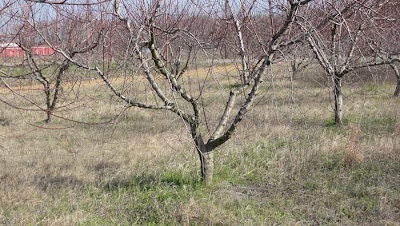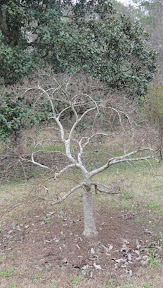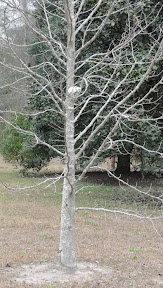Creeping Raspberry, also known as Creeping Bramble, Creeping Rubus and Crinkle-Leaf Creeper, is an evergreen ground cover shrub native to Taiwan. It goes by more than one botanical name:
Rubus pentalobus or
R. calycinoides. "Rubus" means red, and is the name given to the bramble genus. "Penatlobus" refers to its five-lobed leaves. "Calycinoides" refers to the very obvious calyx of the flower and fruit. Though it is a vigorous grower, it should not be considered invasive. It does not climb and is not rampant.
The first thing you'll notice about the plant is that it grows very low to the ground. Its height is only about 2 to 3 inches. As mentioned before, the leaves are five-lobed and have a puckered surface. Foliage color is medium to light green during growing season and burgundy in fall and winter. Small white flowers appear in spring, followed by edible fruits. Creeping Raspberry is truly a ground cover plant for all seasons.
The plant is excellent as a ground cover and for erosion control in small to medium size areas. It is also very useful in container gardens, so gardeners with limited space can also enjoy it. The runners cascade nicely over the edges of planters, pots and even hanging baskets. Creeping Raspberry is a perfect fit for the edible landscape.
The virtues of Creeping Raspberry are many. It requires little maintenance, is disease and pest-resistant, attracts butterflies, is unattractive to deer and rabbits, and is drought tolerant once established. Creeping Raspberry is hardy in USDA climate zones 6 through 10. It thrives in full sun and partial shade. It tolerates sandy to clay soil with pH ranging from slightly acid to slightly alkaline.
Creeping Raspberry does not tolerate foot traffic. Winter weather can damage the foliage a bit, but early spring trimming should restore its beauty.
Begin by taking a soil sample to your local Cooperative Extension Service office. For a small fee, they can run a lab test and tell you what your soil may need.
Prepare the planting bed for Creeping Raspberry by cultivating at least 6" deep, removing all traces of weeds. Compacted soil should be cultivated to 12" deep. I should add here that "cultivate" does not necessarily mean "roto-till." I maintain that "roto-tilling" exposes weed seeds which can germinate and cause future problems. But having said that, it may be necessary to till compacted soil to make it workable.
Creeping Raspberry likes well-drained soil, so add enough soil to raise the bed about 4" above the surrounding ground level. Composted manure may be incorporated into the soil. Fertilizer may be used. If you choose to do so, incorporate 10-10-10 fertilizer at a rate of no more 2 lbs. per 100 square feet into the top 4" to 6" of soil. Avoid synthetic fertilizers contacting any part of your plants.
Plant Creeping Raspberry 18" to 24" apart. Dig planting holes into the cultivated soil a little less deep than the depth of the growing container. Water the plants in their pots. Place the plants into the holes and back-fill, watering as you go. Press soil around the roots. Do not cover the top of the root mass with soil. The tops should be slightly exposed.
Add a top-dressing of mulch around the plants, not on top of them, about 2" deep. The mulch helps retain soil moisture, so you can water less frequently. It also helps suppress weeds.
Irrigate when necessary, but allow the soil to dry between watering. Keep the planting bed weed-free until the ground cover begins to suppress weed growth on its own.
This is a lovely plant with a lot going for it. You should definitely find a place for it in your edible landscape.










